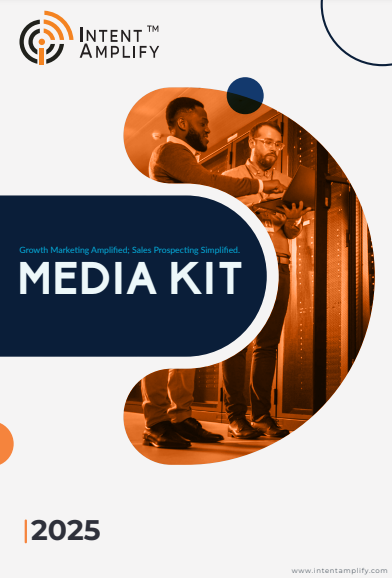
Lead Generation Vs Growth Marketing: Definition, Goals, Tactics, and Trends
- Last updated on: June 27, 2024
Lead Generation vs Growth Marketing: Should I focus on lead generation? Or should I be thinking long-term and invest my time and energy in growth marketing? What if I want to combine both? As a marketer – you may often be grappling with these questions. While there is no perfect answer, you can always learn from other’s experiences and stories.
In 2007, designers Brian Chesky and Joe Gebbia found themselves struggling to pay the rent for their San Francisco apartment. To make ends meet, they had a creative idea: why not turn their loft into a temporary lodging space? Soon, they set up a simple website with pictures of their loft-turned-lodging space—complete with air mattresses on the floor and the promise of a home-cooked breakfast in the morning. They quickly had their first customers. Fast forward to today, Airbnb has a market cap of $95.80 Billion.
Another amazing growth story is that of Slack. Slack started with 15,000 users at launch (2014). Come today and their marketing efforts have secured them over 10 million daily active users.
There are many more such stories that are nothing short of amazing and they are a result of the right combination of marketing strategies. In our article, we shall focus specifically on lead generation strategies and growth marketing.
What Sets Them Apart?
While both lead generation and growth marketing aim to fuel business growth, they serve different purposes and use different tactics. Understanding these differences can be the game-changer for your marketing strategy, helping you boost revenue and expand your reach.
This article will guide you through the definitions, goals, tactics, and trends of lead generation and growth marketing. By the end, you’ll have the insights needed to integrate these strategies for optimal results.
The Importance of Mastering Both
Imagine being able to not only attract potential leads but also convert them into loyal customers. That’s the power of combining lead generation with growth marketing. Ready to unlock the secrets to a more effective marketing strategy? Let’s dive in and explore how these concepts can transform your business.
So, why wait? Let’s unravel the essentials of lead generation and growth marketing and take your B2B marketing to the next level.
This article will guide you through the definitions, goals, tactics, and trends of lead generation and growth marketing. By the end, you’ll have the insights needed to integrate these strategies for optimal results.
Definition of Lead Generation
Whether a prospect contacts you via a form on your website or whether you reach out to your prospects via outbound marketing – they become a part of your lead generation funnel. If they have shown interest in your offerings, they are already inside your lead generation funnel. The ultimate aim is to convert these prospects into hot leads and then into paying customers. This is a complex process that allows every company that applies it to increase the number of its sales leads and boost its conversion rates.
Lead generation combines the efforts of two distinct departments – sales and marketing. This cross-functional synergy results in a more effective transition from acquisition to conversion.
Definition of Growth Marketing
Growth marketing aims at growing business. To achieve this goal, companies use marketing methods like A/B testing, email marketing, search engine optimization (SEO), and data analysis to find the most optimum way of growing business.
Growth marketing can refer to increasing user numbers, boosting revenue, or enhancing brand recognition. The essential approach is to begin with small-scale initiatives to gather data on which marketing strategies are most effective. Then, concentrate your efforts on the channels supported by this data. Subsequently, you can decide how much of your marketing budget to allocate to these successful strategies.
Importance of Lead Generation and Growth Marketing
Lead generation focuses on identifying potential customers (leads) and nurturing them through the sales funnel. It’s about creating interest and attracting prospects that are likely to convert into paying customers.
On the other hand, growth marketing encompasses a broader approach, aiming to enhance overall business growth through customer acquisition, retention, and expansion strategies. Both are essential for driving sustainable business growth, but their roles and methodologies vary.
Understanding the Difference Between Lead Generation and Growth Marketing
Marketing teams still rely on third-party cookies for their lead-generation campaigns. 76% of lead gen marketers believe running these campaigns without third-party cookies would become more challenging. That’s where marketers should clearly understand the differences between lead generation and growth marketing. This would help businesses allocate resources efficiently and design strategies aligning with their specific objectives. While lead generation is often the first step in customer acquisition, growth marketing involves continuous optimization of the entire customer journey to maximize lifetime value and brand loyalty.
What is B2B Lead Generation in Marketing?
91% of marketers say lead generation is their most important goal.
B2B lead generation is the process of identifying and attracting potential business clients. This involves various strategies to capture interest and collect information about prospects who might benefit from a company’s products or services. The ultimate goal is to convert these leads into loyal customers. Key activities include content marketing, search engine optimization (SEO), pay-per-click (PPC) advertising, email campaigns, and social media outreach.
What is Growth Marketing?
Growth marketing takes a holistic view of business expansion. It combines marketing, product development, and customer experience strategies to drive growth at every stage of the customer lifecycle. This approach focuses on acquiring new customers, retaining existing ones, and maximizing their lifetime value. Growth marketers leverage data analytics, customer feedback, and iterative testing to optimize strategies and achieve sustainable growth.
Let us now understand the goals, tactics, and trends in Lead generation and growth marketing in detail:
LEAD GENERATION
What Goals Can be Achieved from Lead Generation?
Setting accurate lead-generation goals is crucial for success. Enhancing benchmarks helps ensure you achieve precise numbers. The goals should follow the SMART criteria: specific, measurable, achievable, relevant, and time-based. This approach ensures your efforts are focused and attainable. Here are some of the goals to consider:
- Increasing the Number of Qualified Leads: The primary goal of lead generation is to attract a large number of potential customers who have a genuine interest in the product or service. This involves targeting the right audience and using effective channels to reach them. 65% of businesses say generating traffic and leads is their biggest challenge – making it crucial to have a tailored marketing approach.
- Improving Lead Quality: Quality of leads trumps over quantity in lead generation. Genuinely interested leads have a high likelihood of converting in your sales pipeline. This requires precise targeting and effective qualification processes using ABM and content syndication.
- Enhancing Lead Nurturing Processes: Once leads are captured, nurturing them through personalized content and timely follow-ups is essential. This helps to build relationships and guide prospects towards making a purchase decision.
What Tactics Are Used In Lead Generation
According to HubSpot, 60% of marketers prioritize generating business leads. This indicates they’ve likely mastered the fundamentals and are then enhancing their lead-generation strategies. The key is to maintain a pipeline filled with high-quality leads.
Here are some lead generation tactics to advance and outpace your competitors in the next quarter.
1.Content Marketing:
76% of marketers use content to generate leads. It includes creating and sharing valuable, relevant content to attract and engage potential leads. This tactic is about building trust and establishing your brand as a thought leader. Key elements include:
- Blogs: According to Sender, companies posting 16+ blogs per month see leads multiply by 3.5 times. Regularly publishing informative and engaging blog posts can drive traffic to your website. Blogs should address common questions and pain points of your target audience, positioning your brand as a helpful resource.
- Whitepapers: A 2017 study by Gartner suggested that B2B buyers spend 45% of their time on independent research – which means they study ebooks, whitepapers, and reports. These are in-depth reports or guides on specific topics. Whitepapers provide valuable insights and solutions, making them ideal for capturing leads who are further down the sales funnel.
- Ebooks: Similar to whitepapers, ebooks offer comprehensive information on particular subjects. They are excellent tools for lead generation as they can be gated content, requiring users to provide contact information to download.
- Webinars: Hosting webinars allows you to engage directly with your audience. Webinars can showcase your expertise, provide valuable information, and allow real-time interaction, making them effective for generating qualified leads.
2. Search Engine Optimization (SEO):
It is the process of optimizing your website to rank higher in search engine results. Higher rankings increase visibility and drive more organic traffic. Key SEO tactics include:
- Keyword Research: Identifying the keywords and phrases your target audience uses when searching for products or services like yours. Integrating these keywords naturally into your content helps improve your rankings.
- On-Page SEO: Optimizing individual web pages, including meta descriptions, title tags, header tags, and content, to make them search-engine-friendly. Ensuring your website is mobile-friendly and has fast loading times also boosts SEO.
- Quality Content: Creating high-quality, relevant content that provides value to your audience. Search engines favor content that is informative, engaging, and well-structured.
- Backlink Building: Acquiring links from reputable websites back to your own. Backlinks are a strong signal to search engines that your content is valuable and authoritative.
3. Pay-Per-Click (PPC) Advertising:
According to a Statista report, it is estimated that companies will spend around $190.5 billion on search advertising globally in 2024. Pay-per-click (PPC) Advertising is all about paying for ads that appear on search engines or other platforms. When a user clicks on your ad, you pay a fee. PPC can drive targeted traffic to your landing pages, where prospects can be converted into leads. Key aspects include:
- Keyword Bidding: Bidding on keywords that are relevant to your business. The goal is to choose keywords with high search volume but manageable competition to maximize your ROI.
- Ad Copy: Creating compelling ad copy that attracts clicks. The ad should be clear, concise, and include a strong call to action.
- Landing Pages: Designing landing pages that are optimized for conversion. The landing page should match the ad’s promise and include a clear call to action, such as filling out a form or signing up for a newsletter.
- A/B Testing: Continuously testing different versions of your ads and landing pages to see what works best. This helps refine your approach and improve performance over time.
4. Email Marketing:
Email Marketing is a powerful tool for nurturing leads and keeping them engaged with your brand. Effective email marketing requires strategic planning and execution. Key tactics include:
- Segmentation: Dividing your email list into segments based on criteria such as demographics, behavior, and stage in the buyer’s journey. This allows for more targeted and relevant messaging.
- Personalization: Customizing emails to address the recipient by name and tailor the content to their specific needs and interests. Personalized emails can significantly increase engagement and conversion rates.
- Automated Campaigns: Setting up automated email sequences triggered by specific actions, such as signing up for a newsletter or downloading a whitepaper. Automation ensures timely and consistent communication with leads.
- Engaging Content: Crafting emails that provide value, whether through educational content, special offers, or updates about your products or services. The goal is to keep leads interested and moving toward a purchase decision.
5. Social Media Outreach:
37% of online users find social networks most influential when looking for inspiration to purchase something. Social Media leverages platforms like Facebook, LinkedIn, Twitter, and Instagram to reach potential leads and engage with them. Social media allows for direct interaction and can drive traffic to your website or landing pages. Key strategies include:
- Content Sharing: Posting valuable content regularly to attract and engage your audience. This can include blog posts, infographics, videos, and industry news.
- Social Listening: Monitoring social media channels for mentions of your brand, competitors, or relevant keywords. This helps you understand your audience’s needs and respond promptly to their concerns or questions.
- Engagement: Actively engaging with your audience by responding to comments, participating in discussions, and sharing user-generated content. Engagement builds relationships and trust with potential leads.
- Paid Social Advertising: Running targeted ads on social media platforms to reach specific audiences. Social media ads can be highly targeted based on demographics, interests, behaviors, and more, making them effective for lead generation.
Trends in Lead Generation
53% of marketers spend at least half their marketing budget on lead generation.
In 2024, the methods businesses use to generate leads are rapidly evolving. Staying ahead in B2B lead generation requires not just keeping up but anticipating the next big trend before it begins. For business leaders, mastering these emerging trends is crucial to thriving in a competitive market. Here are some:
1. AI and Machine Learning:
Artificial Intelligence (AI) and Machine Learning (ML) are revolutionizing the lead generation landscape by introducing sophisticated techniques for lead scoring and personalization.
- Lead Scoring: AI can analyze vast amounts of data to identify patterns and predict the likelihood of a lead converting into a customer. By evaluating criteria such as behavior, engagement, and demographics, AI-powered lead scoring allows marketers to prioritize leads more effectively, focusing their efforts on those with the highest potential.
- Personalization: Machine learning algorithms can tailor marketing messages to individual prospects based on their preferences and past interactions. This level of personalization increases engagement rates and improves the overall customer experience. Personalized email campaigns, dynamic website content, and customized product recommendations are just a few examples of how AI enhances lead generation.
2. Chatbots and Conversational Marketing
Chatbots and conversational marketing tools are becoming essential for real-time engagement and lead capture.
- Real-Time Engagement: Chatbots can interact with website visitors instantaneously, answering queries, providing information, and guiding them through the sales funnel. This immediate interaction can significantly increase the chances of converting a visitor into a lead by keeping them engaged and addressing their needs promptly.
- Lead Capture: By engaging in conversations, chatbots can collect valuable information from visitors, such as contact details, preferences, and pain points. This data can then be used to nurture leads through personalized follow-up messages and targeted marketing campaigns.
- Efficiency and Availability: Unlike human agents, chatbots can operate 24/7, ensuring that no potential lead is missed regardless of the time they visit the website. This round-the-clock availability enhances customer satisfaction and improves lead generation efficiency.
3. Video Content and Virtual Events/Webinars
The use of video content and virtual events is on the rise as businesses seek more interactive and engaging ways to attract and nurture leads.
- Video Content: Videos are a highly effective medium for capturing attention and conveying complex information succinctly. They can be used in various formats such as explainer videos, product demos, customer testimonials, and educational content. Video content not only attracts leads but also keeps them engaged, increasing the likelihood of conversion.
- Virtual Events and Webinars: These platforms provide an interactive environment where businesses can connect with prospects on a more personal level. Webinars and virtual events allow companies to showcase their expertise, address audience questions in real time, and foster a sense of community. They also offer opportunities for live demonstrations, case studies, and in-depth discussions, making them a powerful tool for lead generation.
- Interactive Experience: Both video content and virtual events offer a more dynamic and engaging experience compared to traditional marketing methods. They enable real-time feedback and interaction, which helps in building relationships with potential leads and understanding their needs better.
GROWTH MARKETING
What Goals Can be Achieved from Growth Marketing?
According to startup advisor Andy Johns, “Finance manages cash flow, while Growth oversees customer acquisition and retention.” In essence, while traditional marketing adheres to predetermined plans, growth marketing prioritizes agility and responsiveness. It focuses on optimizing strategies dynamically to foster sustainable business growth and success in a rapidly evolving marketplace. Here are some of the goals.
- Expanding Market Share: Growth marketing aims to increase a company’s presence in the market by attracting new customers and retaining existing ones. This involves identifying new opportunities and leveraging competitive advantages.
- Improving Customer Lifetime Value (CLV): Focusing on CLV means ensuring customers continue to purchase and engage with the brand over time. This involves delivering exceptional value and building strong relationships.
- Boosting Brand Awareness: Creating a strong brand presence in the market is vital for long-term success. Growth marketing strategies focus on increasing visibility and establishing a positive brand image.
What Tactics Are Used In Growth Marketing?
In growth marketing, success hinges on leveraging a diverse toolkit of strategic tactics designed to expand reach, enhance engagement, and drive conversions. These tactics are not just about increasing visibility but are designed to form a comprehensive strategy aimed at accelerating business growth. Here are some tactics:
- Product Marketing: Promoting and selling the product through targeted campaigns highlighting its features and benefits.
- Viral Marketing Campaigns: Creating content that encourages users to share it with their network, thereby amplifying reach.
- User Experience (UX) Optimization: Enhancing the customer experience on digital platforms to increase engagement and conversions.
- A/B Testing: Conduct experiments to compare different versions of marketing materials to determine which performs better.
- Importance of Data Analytics: Using data to gain insights into customer behavior and preferences, informing marketing strategies.
- Customer Feedback Loops: Collecting and analyzing customer feedback to continuously improve products and services.
- Multi-Channel Marketing: Reaching customers through various channels (e.g., email, social media, websites) to ensure a consistent and comprehensive marketing approach.
Trends in Growth Marketing
Emerging as a dynamic force in the marketing landscape, growth marketing continuously evolves to meet the demands of an ever-changing consumer market. Key trends shaping this field include:
1.Account-Based Marketing (ABM):
Account-Based Marketing (ABM) is a highly targeted strategy where marketing resources are focused on a specific set of high-value accounts. This approach involves:
- Targeting High-Value Accounts: ABM identifies and prioritizes accounts that are most likely to generate significant revenue or strategic value. This is done through detailed research and analysis to understand the specific needs and potential of these accounts.
- Personalized Campaigns: 75% of marketers believe personalized experiences drive sales and repeat business. ABM delivers tailored marketing messages and campaigns designed to address the unique needs, pain points, and preferences of individual accounts. This customization makes the marketing efforts more relevant and effective.
- Collaboration Between Sales and Marketing: ABM requires close alignment and collaboration between sales and marketing teams. Both teams work together to develop and execute strategies that engage and convert high-value accounts.
- Measuring Success: The success of ABM campaigns is measured using metrics such as account engagement, deal velocity, and revenue generated from targeted accounts. This data-driven approach helps refine strategies and improve outcomes over time.
2. Predictive Analytics:
84% of marketing leaders use predictive analytics.
Predictive Analytics leverages AI and machine learning to forecast future trends and behaviors based on historical data. This enables more informed and effective marketing strategies:
- Trend Prediction: Predictive analytics can identify emerging trends and market shifts, allowing marketers to stay ahead of the curve and adapt their strategies proactively.
- Behavioral Forecasting: By analyzing past consumer behavior, predictive analytics can forecast future actions, such as purchase likelihood, churn risk, or engagement levels. This helps in targeting the right customers with the right message at the right time.
- Campaign Optimization: Predictive models can evaluate the potential impact of various marketing tactics, enabling marketers to optimize campaigns for maximum effectiveness and efficiency.
- Resource Allocation: Predictive analytics aids in resource allocation by identifying the most promising opportunities and high-potential segments, ensuring that marketing efforts are focused where they will have the greatest impact.
3. Growth Hacking Techniques:
Growth Hacking involves employing creative, low-cost strategies to achieve rapid growth, often through unconventional means. Key aspects include:
- Experimentation: Growth hacking relies on continuous experimentation with various tactics and channels to discover the most effective ways to drive growth. This involves testing hypotheses, measuring results, and iterating quickly.
- Data-Driven Decisions: Growth hackers use data and analytics to inform their decisions, ensuring that each tactic is based on empirical evidence rather than guesswork.
- Leveraging Virality: Many growth hacking strategies aim to create viral loops, where users help spread the product or service to others, amplifying growth with minimal cost.
- Resourcefulness: Growth hacking often involves finding innovative, low-budget ways to achieve big results. This could include leveraging social media, content marketing, SEO, or community building.
4.Personalized and Customer-Centric Marketing:
Personalized and Customer-Centric Marketing shifts the focus toward individual customer needs and preferences, creating more meaningful and effective interactions:
- Segmentation and Targeting: Marketers use detailed customer data to segment their audience and create targeted marketing messages that resonate with specific groups.
- Customized Content: Personalized marketing involves creating content that is tailored to the interests, behaviors, and preferences of individual customers. This could include personalized emails, product recommendations, or customized landing pages.
- Customer Journey Mapping: Understanding and mapping the customer journey allows marketers to deliver the right message at the right time, enhancing the overall customer experience.
- Customer Feedback: Incorporating customer feedback into marketing strategies ensures that the needs and preferences of the target audience are being met, leading to higher satisfaction and loyalty.
5. Sustainability and Corporate Social Responsibility (CSR):
Sustainability and Corporate Social Responsibility (CSR) are increasingly important in building a positive brand image and appealing to socially-conscious consumers:
- Environmental Responsibility: Brands that commit to sustainable practices, such as reducing carbon footprints, using eco-friendly materials, or supporting environmental initiatives, can attract environmentally-conscious customers.
- Social Impact: Companies that engage in CSR activities, such as supporting charitable causes, promoting social justice, or ensuring fair labor practices, can enhance their reputation and build stronger connections with their audience.
- Transparent Communication: Being transparent about sustainability and CSR efforts builds trust and credibility with consumers. This includes openly sharing the company’s goals, achievements, and challenges in these areas.
- Long-Term Commitment: Sustainable and CSR-focused marketing is not just about short-term gains; it involves a long-term commitment to ethical practices and social responsibility that aligns with the values of modern consumers.
By understanding and incorporating these trends, marketers can stay ahead in the rapidly evolving field of growth marketing, ensuring their strategies remain effective and relevant.
Comparing Lead Generation and Growth Marketing – The Final Words
Lead generation and growth marketing are not mutually exclusive; they complement each other. Effective lead generation feeds into growth marketing by providing a steady stream of potential customers. Conversely, growth marketing ensures that these leads are nurtured and converted into loyal customers. Integrating lead generation with growth marketing can lead to better business outcomes.
Understanding the differences and similarities between lead generation and growth marketing is essential for developing a balanced and effective marketing strategy. While lead generation focuses on attracting potential customers, growth marketing aims to maximize their lifetime value through continuous optimization. By integrating both approaches, businesses can achieve sustainable growth and long-term success.




